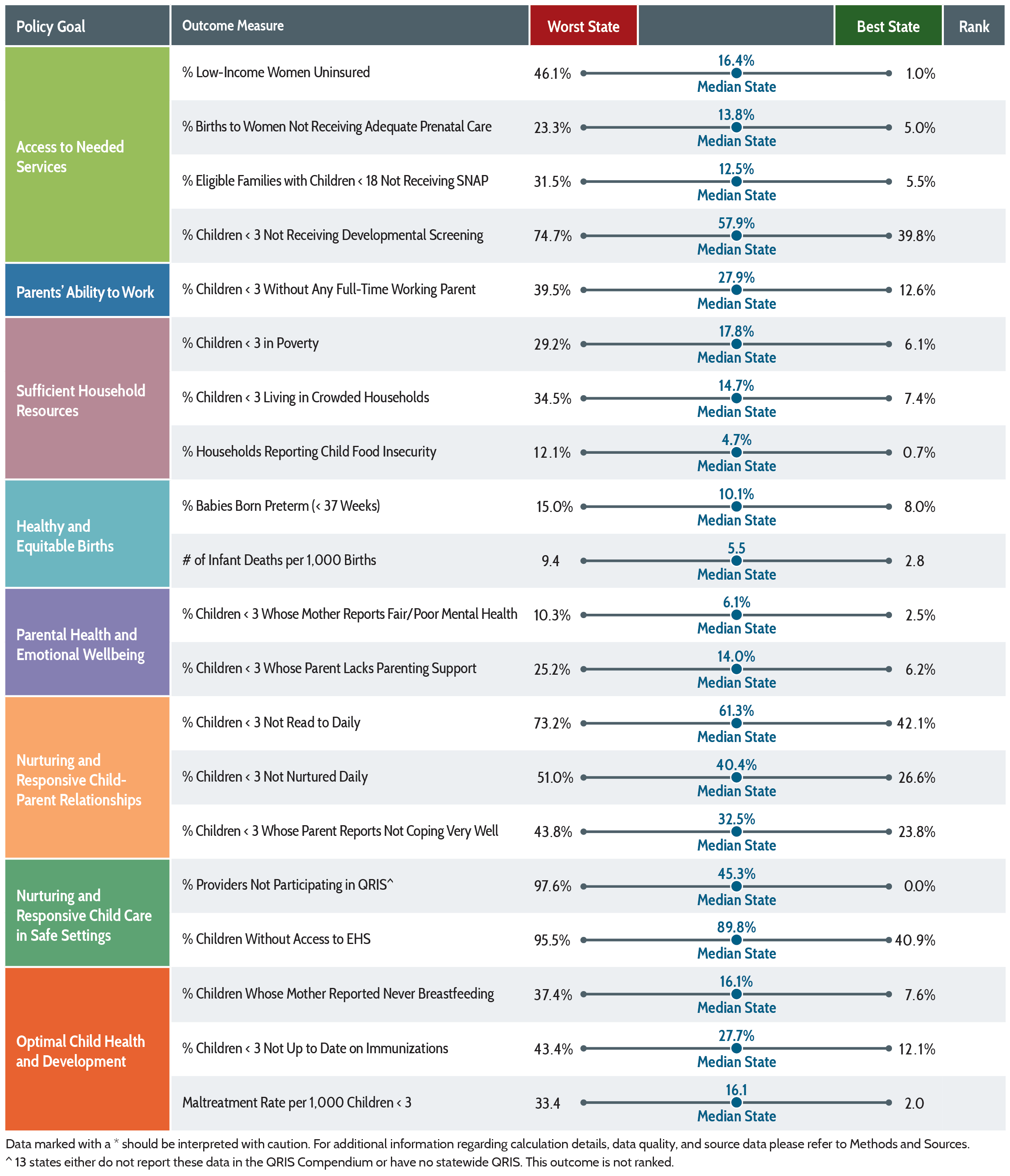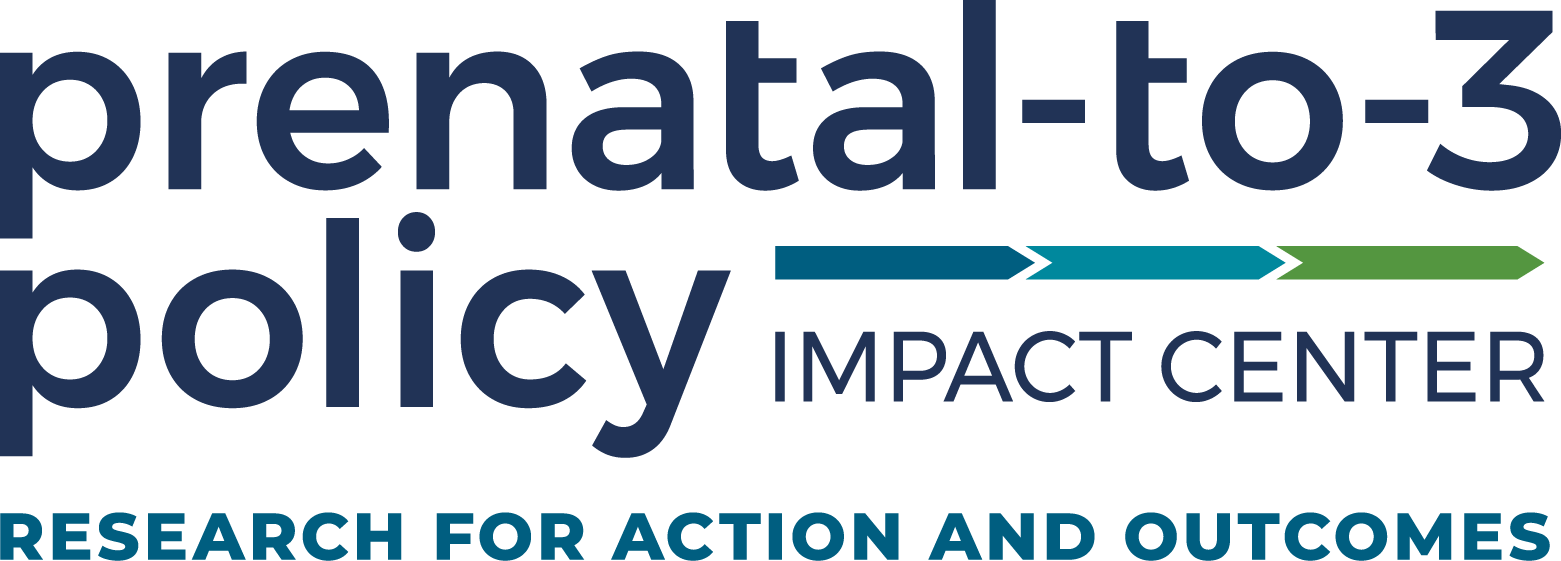CHILD AND FAMILY OUTCOMES
Prenatal-to-3 Outcomes to Measure Impact

To explore detailed state-level outcome data, click on a PN-3 policy goal area:
- Health Insurance
- Adequate Prenatal Care
- Access to SNAP
- Developmental Screenings
- Parental Employment
- Child Poverty
- Crowded Housing
- Food Insecurity
- Preterm Births
- Infant Mortality
- Maternal Mental Health
- Parenting Support
- Daily Reading
- Daily Nurturing Behaviors
- Parenting Stress
- Child Care Providers Participating in QRIS
- Access to EHS
- Breastfeeding
- Immunizations
- Child Maltreatment
FREQUENTLY ASKED QUESTIONS
How can state leaders use child and family outcome measures to inform policy?
State leaders can use this outcome information to understand their states’ success in meeting each PN-3 policy goal, and to prioritize the policy goals in which their state is lagging. The Roadmap provides clear guidance to state leaders on which effective policies or strategies they can implement to improve outcomes related to their priority PN-3 policy goals.
To see which policies are effective at improving each prenatal-to-3 policy goal, check out the Roadmap summary.
What can these measures tell state leaders about equity in access and outcomes?
Although reviewing the aggregate health and wellbeing of children and families is important, states also must pay attention to disparities in outcomes by race, ethnicity, and socioeconomic status. Long-standing patterns of racism, reinforced through state policy choices, have continuously resulted in racial and ethnic disparities in access and outcomes. Eliminating these disparities must be a goal for all states.
Yet, small sample sizes often prohibit the measurement of state-level racial and ethnic disparities in outcomes, unless many years of data are pooled into one sample. Pooling data across years, however, limits a state’s ability to track progress toward their goals over time. Nonetheless, states should continue to collect and analyze disaggregated data to inform, as much as is possible, more equitable policy choices.
Why did the Prenatal-to-3 Policy Impact Center select these outcome measures?
Although the 20 outcome measures included in the Roadmap are certainly not the only, or even the best indicators of child and family wellbeing, they were chosen for three primary reasons. First, these measures are available for all states and the District of Columbia, which allows for national comparisons. Second, rigorous research shows that most of the outcome measures can be positively impacted by the policies and strategies included in the Roadmap. And, finally, nearly all of the outcome measures are predictive of subsequent health and wellbeing of children and families, and thus important to target in the earliest years.
Can the outcome measures be used to track states’ progress toward policy goals?
For additional information on each goal, see the Prenatal-to-3 Policy Clearinghouse.
